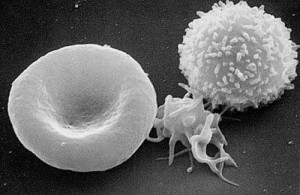
“Everything is awesome!” My son reminds us all of that at least once a day. He’s a bit obsessed with The LEGO Movie these days, and that musical number gets him excited every time. “Everything is cool when you’re part of a team” is a decent summary of the research findings discussed in an earlier Science Corner post. Using mathematical models of group dynamics, it was observed that hierarchical social groups, where some members have more power and more rewards than others, were more collectively successful in the long run than groups where everyone shared equally. In particular, even the members at the bottom of the hierarchy, who gained no direct advantages over their colleagues within their own group because of that hierarchy, were better off than their peers in the other groups.
The study set out to explore how hierarchies came to exist. Empirically, many groups of humans have some kind of hierarchy, from the governments of nations to the captains of ad hoc playground baseball teams. The existence of leaders is so common that it may seem natural, obvious, perhaps even self-evident that they provide value to a group. Yet such organizational structures imply that someone has more — more power, more influence, more wealth. If someone has more, than by definition someone else has less. Giving up what one has to allow someone else to have more seems disadvantageous, at least in the short term. Nowadays we might know from experience that such a dynamic can be beneficial, but that doesn’t explain the very first such choice. Are there conditions that would make one participate willingly? Or must leadership always be seized?
Actually, The LEGO Movie illustrates that tension after a fashion. The song I quoted celebrates teamwork, but much of the narrative emphasizes individuality and freedom of expression as the characters work to overthrow the hierarchy they live under. Yet the climactic action depicts the group of freethinkers as ineffective because they all are pursuing their own direction towards the goal, which is only ultimately reached by submitting to a leader and following his vision. I’ve watched the film a couple of times, and I’m still not sure if this is intentional thematic complexity or an attempt at having and eating the cake. The film seems perhaps content to leave unresolved the tension between an egalitarian ideal where one does their own thing and the fact that sometimes, in order to accomplish your own goal, you have to get other people to work with you.
This tension would seem to cast hierarchy as some sort of necessary evil. Only, I’m not entirely convinced of the necessary part. What about eusocial insect colonies? Sure, we talk about queen bees and ants, but that feels to me like we are using own language of hierarchies to describe another species because those are the concepts we understand the best. Do the ants view the queen as a leader or above them in some fashion, or is that just a human projection? There’s no denying the queen has a distinct role within the colony, but is it a better role in any sense that matters to ants?

What of the eusocial colony of cells that is the human body? One would be even harder pressed to identify leaders and followers in that context. Every cell has opportunities to tell other cells what to do, and every cell has to obey signals from its peers at some point. Granted, I’m not even sure such anthropomorphic language is really appropriate; I use it mainly to demonstrate just how deeply ingrained in the way we talk about the world such categories have become. The main point is that your cells successfully work together without a hierarchy.
Then there is the curious inverted hierarchy implied by the servant leadership model espoused by scripture. It’s not that the model is devoid of leadership roles; most churches have pastors, elders, bishops, or other leaders based on explicit Biblical categories. But those leaders become leaders, not by taking or receiving from the led, but by giving, so that the leaders have less. Now, that may not be the complete picture. One could argue those leaders still have some extra portion of power or influence. I think that’s fair, and I also think the servant leader model is intended to minimize those disparities and to make sure they are employed to serve the interests of the congregation or church and not just those of the leader. Perhaps it’s not a complete reversal of a typical hierarchy, but it’s at least an interesting variation.
Finally, the model seemed to be based on a society of peers, such that no one had a natural advantage to start. In reality, people live within family structures where the age differences provide an obvious way to rank members. Humans have singularly long development periods requiring strong familial connections. The benefits of being raised by one’s parents may provide all the example one needs to think that having leadership is worthwhile.
I’m not disputing the particular research results. We can discuss whether the starting assumptions of the simulations resemble reality, but within that framework I find it plausible that some kinds of social structures could develop in the way their simulations predict. I’m more interested in the premise, and whether hierarchies are so prevalent that we need a mechanism to explain why they would be preferred. Maybe we’re just so used to thinking in those terms that we don’t always recognize the alternatives for what they are. Maybe they are a transitional solution, and in the future they won’t seem so abundant.
Andy has worn many hats in his life. He knows this is a dreadfully clichéd notion, but since it is also literally true he uses it anyway. Among his current metaphorical hats: husband of one wife, father of two teenagers, reader of science fiction and science fact, enthusiast of contemporary symphonic music, and chief science officer. Previous metaphorical hats include: comp bio postdoc, molecular biology grad student, InterVarsity chapter president (that one came with a literal hat), music store clerk, house painter, and mosquito trapper. Among his more unique literal hats: British bobby, captain’s hats (of varying levels of authenticity) of several specific vessels, a deerstalker from 221B Baker St, and a railroad engineer’s cap. His monthly Science in Review is drawn from his weekly Science Corner posts — Wednesdays, 8am (Eastern) on the Emerging Scholars Network Blog. His book Faith across the Multiverse is available from Hendrickson.

Leave a Reply